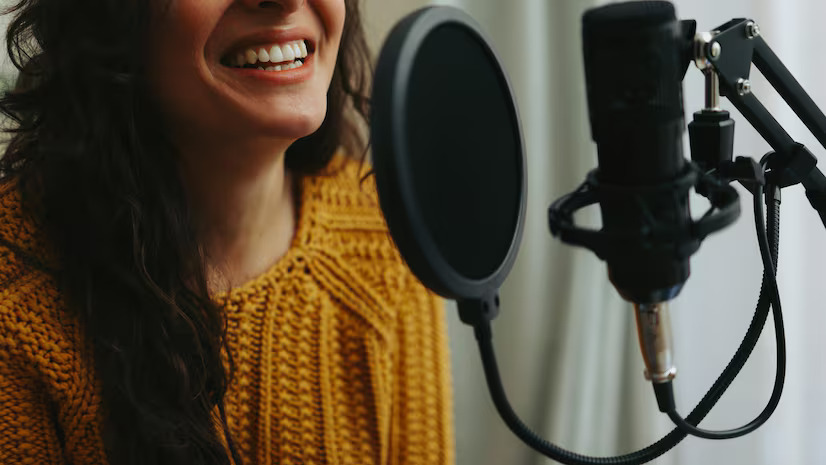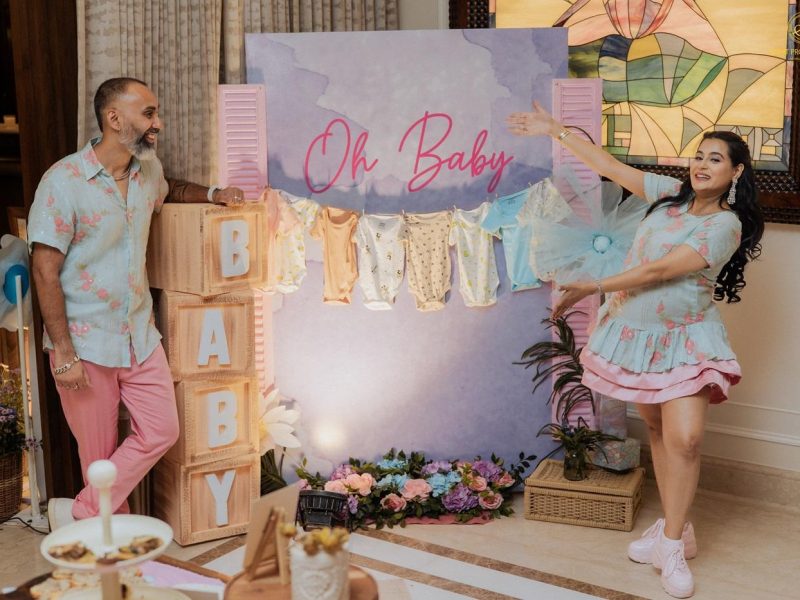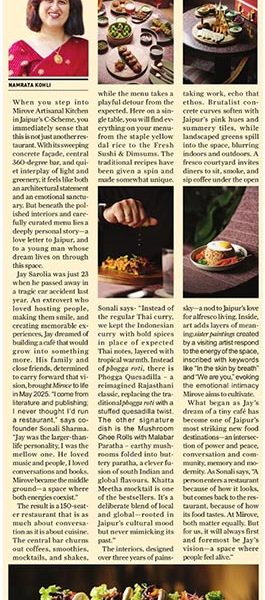In meetings, presentations or conversations, an impressive voice guarantees attention. Voice is a career – used by those radio jockeys, public service announcers, storytellers and artists.
Our voices matter as much as our words matter. Simply put, our vocal imprint contributes much more than we think, to our success (both personal and professional), even to our perceived attractiveness and charisma. “People connect” and “authentic content creation” are extremely important for those wanting to make a profession out of their voice. According to Abraham Thomas, chief executive officer of Reliance Broadcast Network Ltd which operates radio network BIG FM, “I think we have stopped looking at audio professionals as voice artists. They are not voice artists anymore. They are content creators who also have a good voice and clarity in terms of speech. You may not have the deepest baritone or the strongest voice but if your content is relatable and real people get attracted to it, then you are there. How authentic, how imperfect you are and how you can strike a chord and connect with the audience are deal makers. It’s about being real and that is the core strength for an audio professional today.”
Signature Voice
So, how do we train our voices to be more visceral, effective, and command attention? The daughter of advertising legend Alyque Padamsee and theatre and film veteran Pearl Padamsee, Raëll Padamsee runs courses on speech and drama. Says Raëll Padamsee, MD and CEO of ACE Productions, a Mumbai based film production company – “We do a whole lot of things such as speech exercises, diction, pronunciation. Basically more than voice, what we teach is communication skills and public speaking where voice modulation is important and it’s also crucial to know how to throw your voice. Even though this may sound a bit outdated, people who learn from us want to understand the classic techniques.” One exercise Padamsee recommends is MRR: “Mirror, rehearse, record your voice several times before you get it right, at least five-six times until you nail it correctly.” As in other skills, she says it’s a matter of great practice and there are no shortcuts to success, however cliched it may sound, and it calls for discipline.
Some people are born with an innate ability to speak while most cultivate this. Take the case of Shobha Tharoor Srinivasan, National Award-winning Voiceover Talent who has lent her voice for many travel, wildlife, documentary films and offers voice coaching in person in California and on zoom for students elsewhere. She says- “Speaking skills can be cultivated and a voice can be trained to be used for professional purposes. But, to be a voiceover talent there’s more to it. It’s not just about your voice. It’s about how you use it. The key talents required for voiceover are believability and communication ability. The voice over professional is a straightforward, compassionate, intelligent “storyteller.” And the recorded voice is the Voice actor’s calling card which is distinctly different from the live voice unless a director has specifically requested a conversational narration. A voice talent should be able to read copy successfully and often swiftly. You have to be able to get a point across, relate a feeling, and nail it the first time. So, it’s as much about how you read as it is about vocal type.” Is this lucrative financially? Srinivasan shares – “I’ve made $400 for a two-minute film but have also worked on social documentaries that were much longer for less. A narrator can make a few thousand $$ for a 200-page audio book.”
Gurdip Wadhwa Sial, Founder Gcorp Media Studio is a Mumbai based content and audio producer who runs training programs for aspiring dubbing artists. Her company Gcorp Media conducts a beginner course (of a group class comprising 6-8 people) spanning three hours where they introduce the basics of voice and charge a fee of Rs 2,500 per person. If the individual wants to pursue this as a career, then there is a one-on-one training program spanning a month with two classes per week and a total of 8 classes, for which the charges are Rs 25,000 per person. About remuneration, Sial says that each genre has a separate rate card – e.g. a voice artist may expect to earn anything from Rs 5,000- Rs 15,000 for a TV Commercial; e-learning platforms may help one earn in the range of Rs 5,000- Rs 20,000 while corporate AV (audio visual) films anything from Rs 2,000- Rs 8,000.
When you intentionally place volume on certain words, you emphasize parts of a message and shift the direction of a conversation toward your preferred outcome. Even the slightest nuances can dramatically shift the meaning of your sentences, express your underlying intentions, and impact how your messages are interpreted.
According to Jamshed Qamar Siddiqui, who takes care of daily and weekly podcasts at Aaj Tak Radio, “There are three important attributes of voice- stress (volume), intonation (rising and falling tone), and rhythm (pacing). By combining vocalics with public speaking skills, we can colour our words with the meaning and emotion that motivates others to act.” His role model is Ameen Sayani whose voice stood out for its “honesty”. His advice to aspirants is to work on voice clarity and “where every Talaffuz which means the pronunciation, articulation, the way of saying a word is crystal clear. Also the speech should look natural and lucid. Even in a scripted story, we make the Podcast sound believable by adding stops, fumbling etc. But if there is a natural voice problem, then it should be fixed.”
What can cause issues in speech? There could be problems in the structure of the mouth, tongue, and jaw, and muscle coordination. People may have differences in oral anatomy or muscle tone, which might affect their speech production. There could be physical abnormalities such as cleft palate, cleft lip, missing teeth, and other structural problems with the mouth and throat. Even certain neurological conditions such as cerebral palsy, Down syndrome, stroke, Parkinson’s impact speech. “Common problems are that can be fixed on time include Stammering / stuttering, weakness in the voice that can lead to hoarseness, delay in language development and speech problems due to hearing loss of early childhood,” says Dr. Arti W. Nagpal, Sr. Speech Pathologist & Audiologist, Artemis Hospitals. She explains that – “Normally, every sound has an age of its Acquisition. A normally growing child also has unclarity in speech. For example, a child may simplify the word “stop” to “top” by dropping the “s” sound or replace the “th” sound in “think” with the “f” sound, producing “fink.” These changes are temporary and typically disappear as children get older and their speech becomes clearer. Difficulty in producing speech sounds correctly or Unclear speech sounds becomes a disorder, among both children and adults, when they are unable to learn the correct sound productions with age.”
Some of the biggest speech issues that people may continue to live with and may not even know include lisps, stuttering, and voice disorders like hoarseness or monotone. These challenges can significantly impact communication and confidence. Usually, people may not realize the extent of their speech issues. Says Dr. K. K. Handa, Chairman, ENT, Head and Neck Surgery, Medanta, Gurugram, “Speech therapy offers tailored solutions, which include exercises to improve articulation, fluency techniques for stuttering, and vocal exercises for voice disorders. It’s necessary for people to seek assessment and treatment from speech-language pathologists who can provide tailored guidance and strategies to address their specific needs and enhance their overall communication skills. The aim of speech therapy is to address these issues with the help of targeted exercises and techniques. Techniques like articulation therapy focus on strengthening specific speech muscles and improving coordination. Furthermore, interventions like oral motor therapy can help in improving muscle control and coordination in the mouth and face. While some structural issues may be permanent, therapy can significantly help in improving speech clarity and intelligibility.
Price Chart
If you are interested in pursuing a voice-based career, the table below will help you to know the top trending training programs in honing the voice:
| Institute/Course Name | Features | Price |
| Raëll Padamsee’s ACE Productions | Intensive Speech and Drama (10 hrs) courses to summer workshops | Rs. 7,500-29,700 |
| Voice Over Training by Deepak Agnihotri | 1-1 classes in training in voice over, Dubbing, Acting, Voice Modulation. | Rs. 18,000 – 20,000 |
| R. K. Films & Media Academy | 3 months training in Voice Culture conducted by Munish Jolly | Rs. 30,700 |
| Viva Voice Academy | Online Voice Training Module 1 month to 6 month | Rs. 25,000 – Rs. 1,00,000 |
| Himanshu Khanna’s Voice Over Training | Online and Offline Group Workshop/Mentorship | Rs. 7,000 – 10,000 |
| Voice Bazaar by Anil Mani | 3 hour/30 session Online program | Rs. 20,000 |
| Shobha Tharoor | Online 1-1 customized classes | $100/ hour or Rs 8,300/hours |




